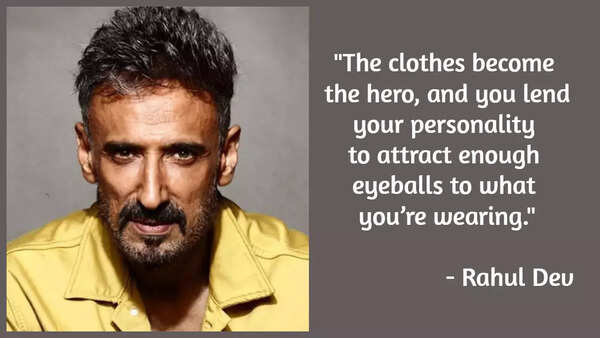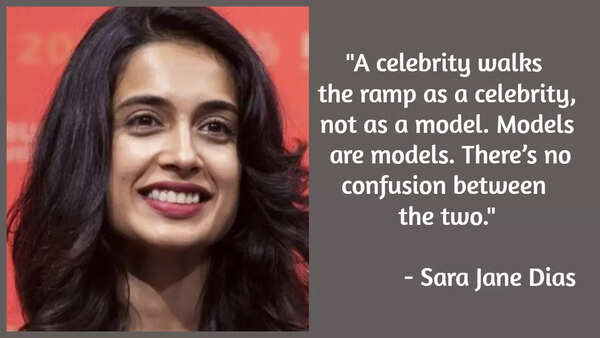
In recent years, Indian fashion shows have increasingly featured Bollywood actors in roles traditionally held by professional models. This shift sparked debate after Janhvi Kapoor’s appearance as a showstopper, receiving both praise and criticism online. The conversation raises a key question: Is this a smart marketing move or a disservice to trained models and the integrity of the runway?
The Rise of the Celebrity Showstopper
A Recent Controversy Janhvi Kapoor’s recent fashion show appearance was applauded for its glamour, but some critics questioned her ramp skills, calling for a return to professional models. This incident highlights a growing trend—celebrities replacing models for the sake of media buzz, sometimes at the cost of technical finesse.
Bollywood and Fashion
A Longstanding Bond Bollywood’s influence on fashion isn’t new. From Madhubala to Ranveer Singh, film stars have shaped trends for decades. However, their current runway roles go beyond trendsetting—they now often headline shows, shifting the focus from fashion to spectacle.
Why Designers Choose Celebrities
Wider Reach and Visibility Bollywood stars bring instant media attention and social media traction. With platforms like Instagram and TikTok, designers can reach broader, younger audiences. Celebrities like Ananya Panday and Ranveer Kapoor walking the ramp guarantee coverage across media outlets.
Blending Two Influential Industries Bringing film stars onto the ramp merges entertainment with fashion, appealing especially to Gen Z. Designers tap into an engaged fan base, boosting brand recognition and reach.
The Flip Side: Concerns and Criticism
Runway Skills Matter Critics argue that professional models are trained to highlight garments with precision—something celebrities often lack. Janhvi Kapoor’s “bouncy” walk, for instance, was said to undermine the collection’s impact.
Former model and actor Rahul Dev told said, "The runway involves a basic understanding of fashion. You listen to what the choreographer expects of you. The clothes become the hero, and you lend your personality to attract enough eyeballs to what you’re wearing."
He continued, "Whereas in films, the character takes precedence. Instead of the choreographer, you’re listening to the director and their vision. Then you lend your creativity to bring that vision—along with the writer’s—to life. So, they're both entirely different disciplines."

Rahul further added, "Modeling, by its nature, requires a certain physical presence. For instance, male models are typically six feet tall or more, with a specific structure. For female models, it’s generally five-foot-eight and up, again with a structure that allows the clothes to stand out best on them. That said, it also depends on the designer's creativity—what they want to project."
"Many designers today believe that because models appear almost perfect, like mannequins, they help spotlight the garments better. Since the end buyer is usually a regular person on the street—or depending on the price point, someone with significant spending power—those buyers may not necessarily resemble the models wearing the clothes. But the visual still serves its purpose," he shared.
Meanwhile Sarah Jane Dias also echoed the same senitiment. She said, "I’ve done both—I started as a model and then became a showstopper. Honestly, I don’t understand the ongoing debate. It’s not as if celebrities are walking in every show. Designers choose celebrities to represent their fashion brand or label, primarily to add visibility and sometimes even credibility to what they’re showcasing. That’s really it."
She added, "A celebrity walks the ramp as a celebrity, not as a model. Models are models. There’s no confusion between the two. I don’t believe anyone is, quote-unquote, stealing limelight. Each has their own place. In fact, many designers prefer not to have celebrities at all and instead choose their favorite models to open or close their shows. So, I truly don’t see the issue. When a celebrity is made the showstopper, it’s usually a strategic business move to draw attention to the brand."

Impact on Professional Models
The celebrity trend raises concerns about reduced opportunities for trained models, especially in platforms originally designed to highlight modeling talent.
Sharing his thoughts on the same, Rahul said, "When it comes to celebrity participation, I don’t think they’ll ever replace models. First, because they come at a higher price than professional models. Second, even if it’s a current trend, nothing will truly replace the model’s role. It’s like asking whether influencers will replace actors—it’s not possible. For a specific film, you need a trained actor. Similarly, for showcasing clothes on the runway, you need a trained model. So, I don’t think models are going anywhere."
He added, "Yes, you can use one-off celebrity showstoppers for the eyeballs. But even then, the really big designers usually prioritize their creations. Many belong to a school of thought that doesn’t believe in using showstoppers. Others might use them because a particular celebrity inspires them to design a collection. To each their own. There’s no hard and fast rule. Models will continue to be around, as will celebrities—from sports, the arts, or any field where someone has a significant public presence."
Sarah quipped in, "Not at all. Celebrities have been walking the ramp for a long time. If anything, we need to spotlight the amazing supermodels we have in India today—those who’ve been around for years and continue to walk the ramp successfully."
She added, "Models like Diana, Sanya, Deepthi—they’ve built incredible, long-standing careers. Instead of criticizing celebrities, I think the focus should shift to celebrating the talent and longevity of our professional models who are consistently part of fashion shows and designer campaigns."
Finding a Middle Ground
Keeping the Craft Alive Some designers now position celebrities within the broader lineup rather than as the main focus. This preserves the integrity of the collection while still benefiting from star power.
Balancing Art with Business While celebrity appearances boost visibility, the challenge lies in preserving runway standards. On forums and panels, fashion insiders have noted that over-reliance on celebrities can dilute the craft and overshadow trained models.
Social Media and Storytelling Brands like Sabyasachi use digital platforms to showcase both celebrities and craftsmanship. Social media enables designers to highlight technical details alongside glamour, striking a necessary balance.
Clear Communication Designers can benefit from clarifying the intent behind each show—whether it’s to drive publicity or focus on fashion artistry—helping set expectations for both audiences and participants.
Sarah said, "I believe we’ve already evolved. Today’s runways feature models of all shapes, sizes, and sexual orientations—from big cities to small towns. And, to reiterate, roles are clearly defined: models are models, celebrities are celebrities, and now we also have influencers on the ramp. That’s part of the evolution—people like Sakshi and Santoshi Shetty have walked because their online personas align with fashion. Sometimes they’re relevant to fashion, and sometimes they’re not—but that’s the nature of the industry now."
She added, "If I had to predict the future, I jokingly say we might even see AI models! But truthfully, our ramps already reflect diversity in every sense. What I would personally love to see is more focus on male models. I miss the era of Arjun Rampal and Milind Soman. We still have great male models today, and they deserve more attention and recognition on the ramp."
Rahul Dev shared, "This current trend of mixing models and celebrities feels very specific to Mumbai. In other cities where fashion thrives—like Delhi, which is often considered the fashion mecca of India—it’s not feasible to fly in too many people and cover accommodations. It becomes expensive, even for sponsors. So, in the long run, I believe designers will continue relying on professional models."
He added, "Let’s be honest: models are trained to showcase clothes on the runway, and their presence simplifies things for designers. When designers prepare for a fashion show—with about 12 to 14 people in each sequence and around eight sequences total—that’s over 100 garments. It’s easier to standardize those garments for professional models with specific measurements than to custom-fit everything for individuals."
"Bespoke designs for many individuals would be complicated and costly. So, in that sense, models are indispensable. Designers will always return to them for runway showcases," he concluded.
Conclusion
The growing presence of Bollywood on the runway reflects changing marketing strategies in fashion. While star power helps drive attention, the core skill of modeling remains crucial. A balanced approach—where celebrities enhance rather than eclipse professional talent—could be key to honoring both artistry and audience appeal. By integrating glamour and skill, the Indian fashion industry can evolve without compromising its essence.

 4 hours ago
39
4 hours ago
39




























 English (US)
English (US)